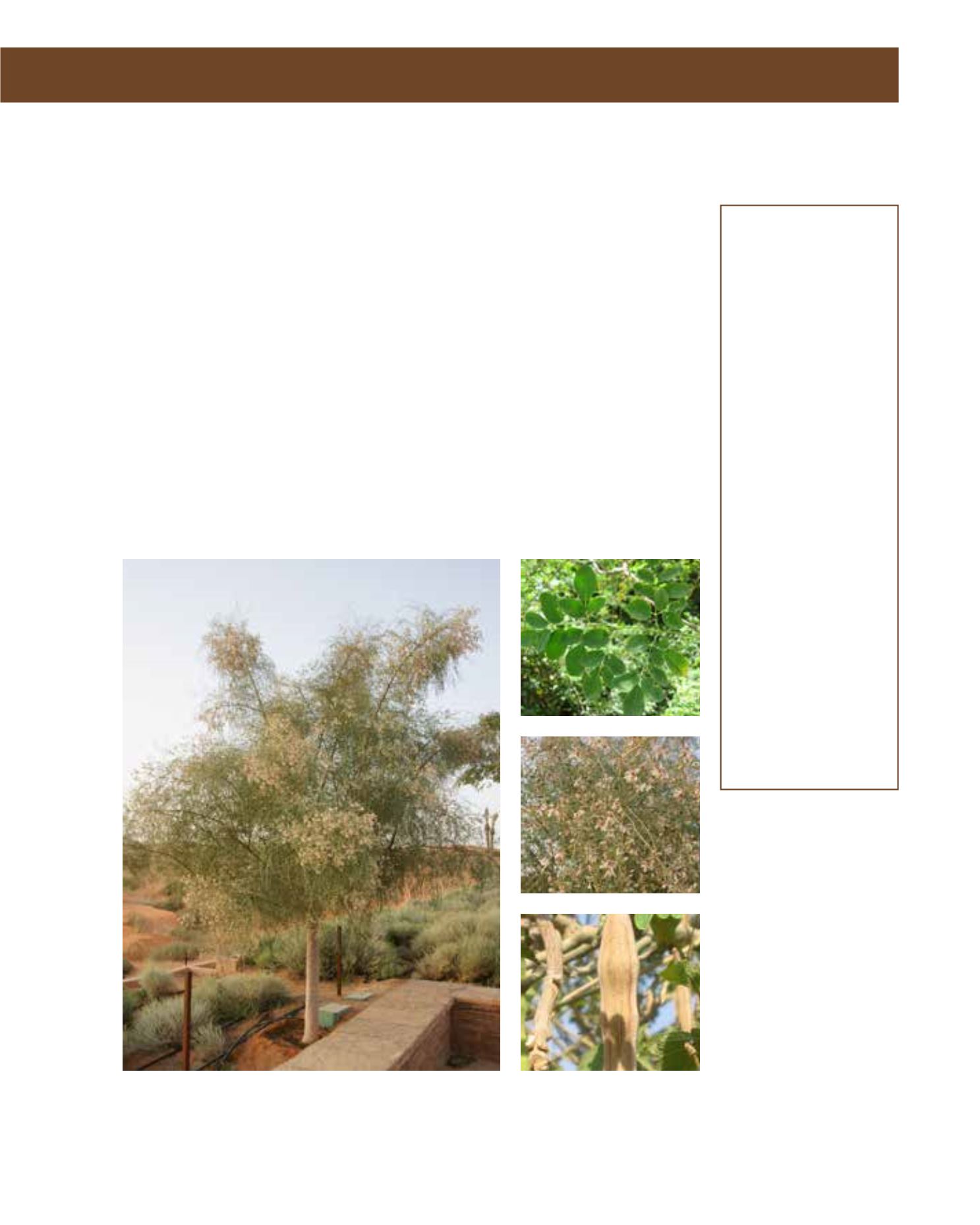

GENERAL
Origin
:
sub-tropical,
tropical
Vigour
:
fairly fast
growing, fast
growing
Humidity
:
semi-arid, semi-
humid, very
humid
Propagation :
direct sowing,
sowing and
pricking out,
cuttings, grafting
Maintenance :
low
CONDITIONS
Dessication :
vulnerable
Stagnant water :
vulnerable
Irrigation
:
medium
Salinity/ppm :
high (3500 ppm)
Hardiness
:
+3°C
SHAPE
Type
:
tree
Height
:
8 m-10 m
Spread
:
6 m-8 m
Foliage
:
deciduous
FLOWER
Colour
:
white
Size
:
15 cm
Period
:
April - September
Smell
:
pleasantly
scented, sweet,
flower
FRUIT
Type of fruit :
pod
Fruit size
:
50 cm
The Drumstick or Horseradish Tree is an erect, fast-growing tree with open branches and a grace-
ful appearance reaching up to 10 metres in height. Native to India, it is characterised by its thick,
dark corky grey bark, delicate foliage and beautiful, fragrant flowers. The distinctive, bipinnate
leaves up to 40 cm long have widely spaced, oval, clear green leaflets on short stalks. Attractive
whitish-yellow, highly scented flowers are borne in loose clusters covering the whole tree in spring
and early autumn. The fruit, up to 50 cm long, is a bright-green, ridged pod containing many
seeds, which are a popular ingredient in curries. The tree grows best on a dry sandy soil and has
a high drought resistance. In Arriyadh, it requires regular irrigation and a sheltered microclimate
with a humid atmosphere. Propagation is from seed and cuttings. The Horseradish Tree is useful
in many ways: its name is derived from the roots, which taste like horseradish, and the seeds
yield oil for machinery, salad oil and soaps. The bark contains a coarse fibre for making mats,
paper and cordage. The branches are used for fodder. M. oleifera makes an ideal shade tree for
courtyards, patios and small gardens. Undemanding, it requires careful pruning: branches can
be brittle and are planted as a living fence. It is not susceptible to pests or diseases. A wild shrub
form growing in rocky wadi sides is M. peregrina (al ban in Arabic): up to 3 metres high, it has
profuse flowers, is drought-tolerant and has good potential for garden cultivation.
204
Moringa oleifera,
Moringaceae
Horseradish tree
















